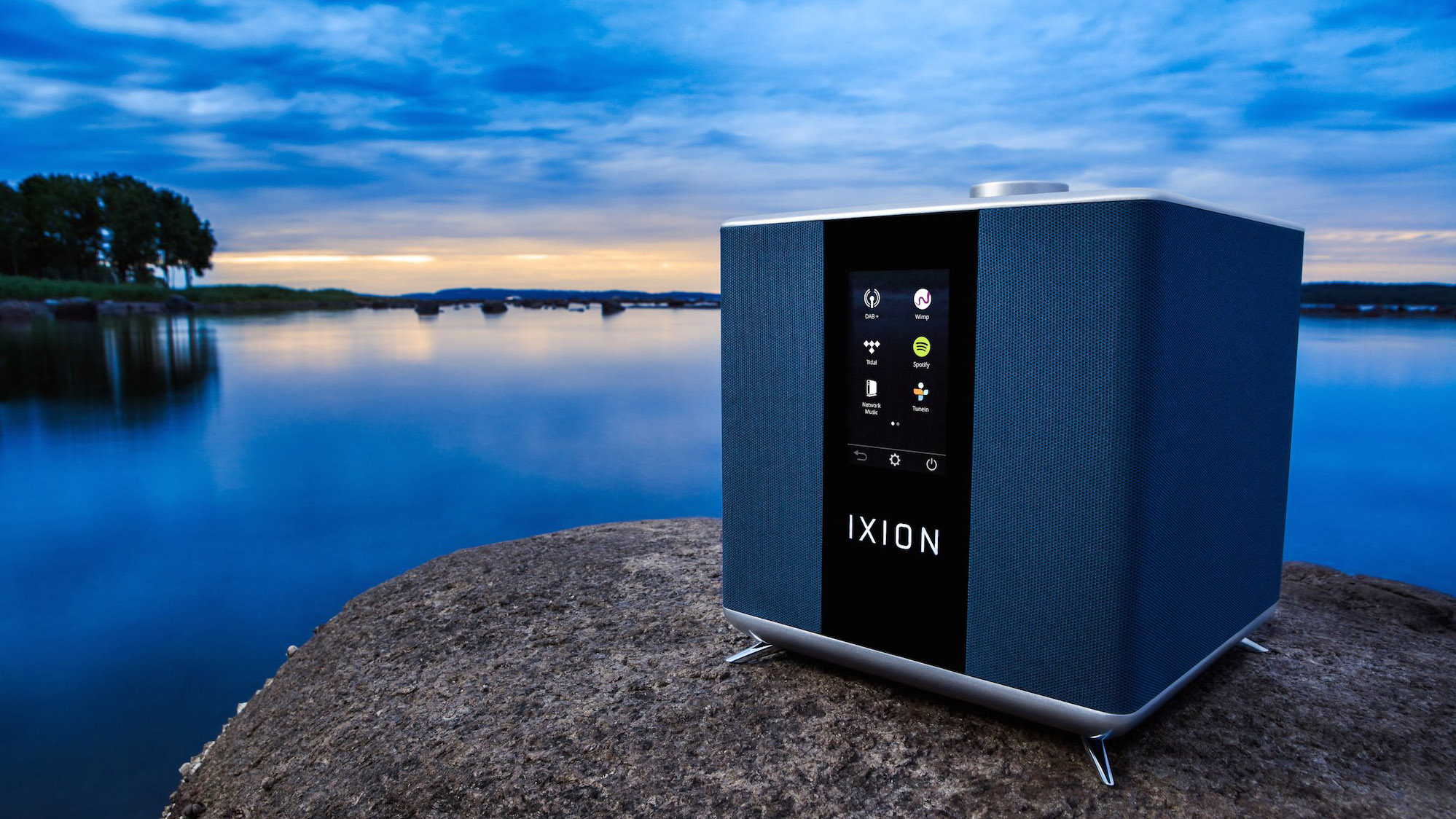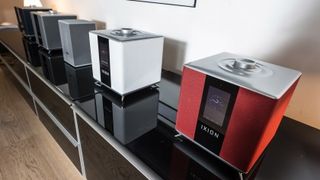Ears on with the Maestro - the luxury multi-room speaker that's handmade and tuned
Includes everything but the kitchen sink

There's high-end hi-fi, and then there's 'this thing is so high-end that we're making them all by hand and then listening to and tuning them each individually before we ship them to exclusive luxury stores'.
Ixion is aiming for the latter.
The Maestro, Ixion's first device, is a music-streaming box with a touchscreen built into its front.
This touchscreen is helpful, as it means that unlike rival streamers such as the Mu-So Qb the Maestro doesn't require a smartphone to function. Instead you can do everything you need to from the touchscreen, which is helpful if you're using the speaker in a party setting where multiple people will be queuing up tracks.
Of course you can use Ixion's app to control the device remotely for convenience as well.
Codec choice
The Maestro supports a crazy number of codecs, 110 to be exact, as well as audio connectivity from seemingly every source under the sun. This includes USB, internet radio (through TuneIn integration), streaming services (with Tidal and Spotify shown off at the event), DAB and DAB+ radio and even standard FM/AM radio.
Disappointingly there is no support for Apple's AirPlay standard included out of a desire to keep the product's design as open as possible. Thankfully users of iOS devices can use Ixion's remote control app to listen to music on the device, but this has the potential to limit the amount of music sources available down the line if Ixion doesn't patch support for them into its official app.
Get the best Black Friday deals direct to your inbox, plus news, reviews, and more.
Sign up to be the first to know about unmissable Black Friday deals on top tech, plus get all your favorite TechRadar content.

The device supports tracks up to 24-bit/192kHz music files. For reference, CD-quality is 16-bit/44.1kHz. Music sources can be connected digitally through SPDIF or analogue through standard RCA and line-in jacks.
Looking forward, the Ixion will support MQA audio in an upcoming update, so you should soon be able to enjoy high-resolution streaming from the likes of Warner Music when MQA tracks start becoming widely available.
Ixion doesn't yet know whether MQA will go on to be widely adopted by the industry, but it wants to support it in case it does.
The move is indicative of a wider philosophy that Tom Austad and his team at Ixion has adopted. At £1,099 the device is expensive, and the team want people to be comfortable investing in a product they'll be using for years.
Ixion has said that it would like to add support for more services and codecs down the line if there is demand from users for it, and has even said that it has the ability to remotely access and fix a device if the user complains about it malfunctioning.
Sound impression
All of this is of course irrelevant if the Ixion doesn't sound the part, and from what we heard it made a very good impression.
The downward facing subwoofer provides a remarkable amount of bass for a device this size and the isolated construction and floating design means that a good amount of detail is audible without the volume having to be cranked up too high.
Listening to a piece of jazz revealed just how adept the subwoofer is with the Maestro adeptly able to distinguish between exceptionally low notes on the trombone. At the same time the device never lost sight of the other tracks in the mix, which retained their same space and clarity.
Switching to an orchestral piece revealed the breadth of the soundstage the Maestro is capable of, so much so that one of the journalists present at the launch needed to confirm that we were in fact listening to just one of the devices and not two of them paired in stereo (which as it turns out the Maestro is not capable of doing).
The Ixion is available at select stores, including Harrods, now. Ixion has not yet announced plans to launch the device outside of the UK.
Jon Porter is the ex-Home Technology Writer for TechRadar. He has also previously written for Practical Photoshop, Trusted Reviews, Inside Higher Ed, Al Bawaba, Gizmodo UK, Genetic Literacy Project, Via Satellite, Real Homes and Plant Services Magazine, and you can now find him writing for The Verge.
